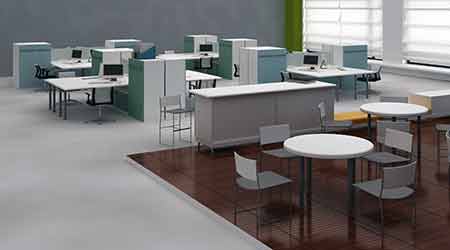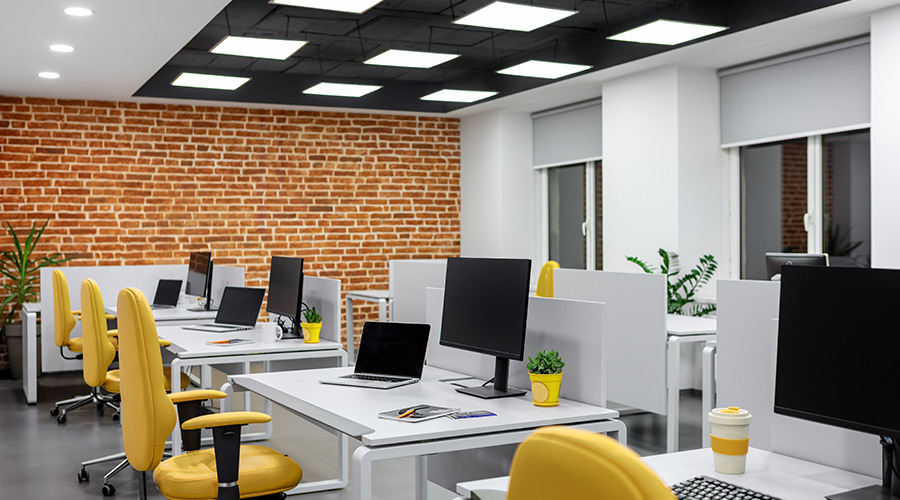Managing the Acoustics of Open, High-Performance Workplaces
First of a 3-part article exploring the acoustical challenges in open workspaces
High-performance workplaces can be an ideal environment for employees, allowing easy collaboration and communication in shared spaces. But these attributes can also be an Achilles’ heel because the spaces are often open, giving workers less individual space, less privacy, and increased noise. Properly managing the acoustics of open spaces, however, can help by controlling the noise level and giving workers options for private conversations and group discussions.
Open, high-performance workplaces have many benefits, with ease of collaboration topping the list. The lack of walls or partitions means employees can easily discuss a project or seek advice without having to walk through a maze of cubicles. “You’re able to collaborate and plug in anywhere,” says Ioana N. Pieleanu, a senior consultant with Acentech, an acoustical consulting firm. “It’s a more dynamic environment.”
Indeed, recent research shows companies that adopt an open office environment can see increases in employee performance, says Christopher Pollock, a partner with Cerami Consultants. “The nature of the open office increases communication both within work groups and between work groups, and research shows that knowledge sharing increases as a result of ‘collisions,’ ” Pollock says. “These collisions, where knowledge workers interact informally, perhaps in a pantry space or a lounge, can be a catalyst for higher performance through sharing of ideas that may not have a place to be formally shared.”
High-performance open workspaces can also give a greater number of employees access to natural light and views, both of which earn credits in the LEED program, Pollock says.
Acoustical Complaints
Still, these workspaces bring some acoustical challenges, namely concerns regarding more noise and less privacy and personal space. The most common acoustical complaint is voice-related interruptions, where an employee’s focus is interrupted by the voice of another individual who isn’t part of a work group but is close enough to cause a distraction, Pollock says.
“It’s more difficult to concentrate when people move and have a discussion around you and you can follow the discussion,” Pieleanu adds.
Voices aren’t the only possible distractions in high-performance workplaces, Pollock says. Everyday noises such as coffee machines, printers, copiers, and other office equipment can suddenly be distracting to people, he notes. The sound of a telephone ringing is also an issue, because the ring has a shrill pitch that penetrates several types of surfaces, says Daniel Herriott, vice president and director of interior design for HOK. And it can even be a problem when a space is too quiet, Herriott says. He equates it to being in a library, a space that is quieter than what most people are accustomed to.
Related Topics:














